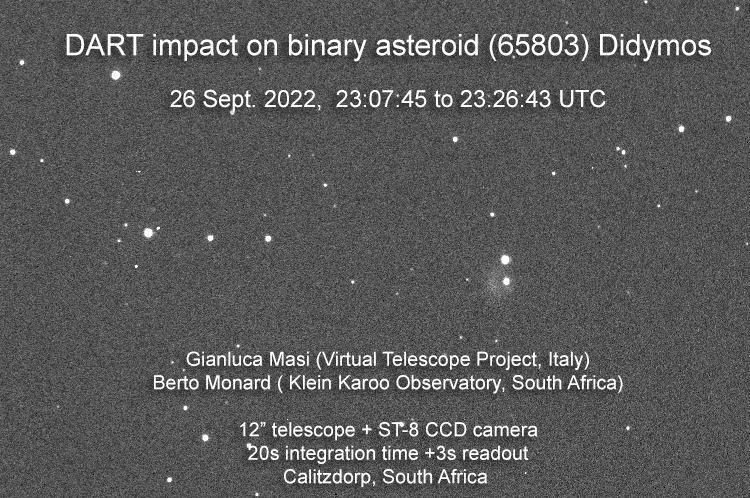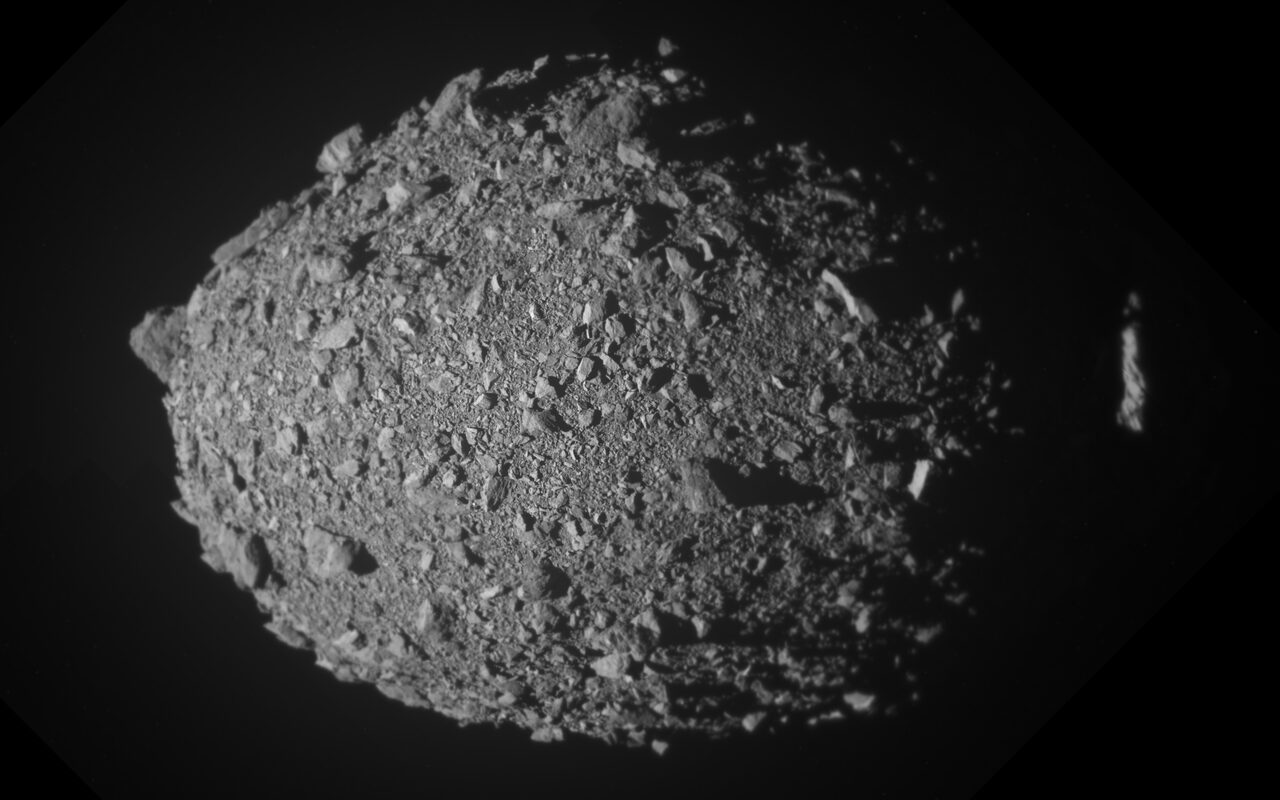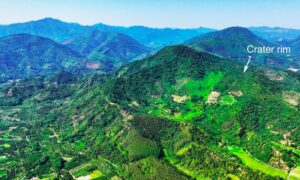Planetary scientists have published a detailed follow-up on the debris from their historic 2022 asteroid impact experiment in outer space. What they found challenges their understanding of the asteroid’s behavior since the impact. Two tight clusters of boulders have veered off from the main zone of debris at very high velocities.
Those boulders have escaped the asteroid system and are now orbiting the Sun. It’s unclear where on the asteroid they came from, why they’re moving so differently from the rest of the debris, or what they mean for the long-term course of the asteroid.
A historic asteroid deflection test

Observations of Dimorphos immediately after impact by DART. Photo: Virtual Telescope Project/Klein Karoo Observatory
In 2022, NASA live-streamed one of the most daring missions in its history. The Double Asteroid Redirection Test, or DART, sought to change the orbit of an asteroid by slamming into it with a spacecraft. The challenge was enormous. The size of the target asteroid — named Dimorphos — in the night sky is akin to a single atom held at arm’s length.
The team behind DART knew they might be live-streaming their spacecraft missing the asteroid. But in an era of misinformation, conspiracy theories, and apocalyptic panic, they wanted the public to have transparency every step of the way.
Their gamble paid off. The DART spacecraft knocked smack into Dimorphos. NASA proved that in the event that a killer asteroid is heading towards Earth, we can knock it out of the way.
Strange boulders

The iconic last image from NASA’s DART mission shows only part of the asteroid’s surface in the field of view. The spacecraft smashed into the asteroid before it finished transferring the rest of the photo. Photo: NASA
DART was proof to the public that planetary scientists can keep them safe, but first and foremost, it was a scientific experiment. Simulating asteroid impacts on a computer doesn’t compare to the real thing, especially when there are so many things about asteroids we don’t know. They can be as chemically and topologically variable as terrestrial geology, and their tiny size makes observing them challenging.
So, to protect Earth from a hazardous asteroid, planetary scientists have mined every aspect of the DART mission for pieces of the puzzle. The new boulder tracking study, published this month in the Planetary Science Journal, uses images taken by an ESA spacecraft called LICIACube that accompanied DART.
The researchers found that two main groups of boulders veered off from Dimorphos in the minutes after impact. Many of them aren’t following the main cloud of debris, and have such high velocities that they can escape the asteroid system.
The team’s top theory is that these boulders are the fractured remnants of larger rock formations right next to the impact site. Since they were already loose, the spacecraft easily dislodged them before reducing them to smithereens.
Boulders mean orbital calculations might be off
None of these boulders is anywhere near large enough to threaten life on Earth. If they happened to head towards us, they would vaporize upon atmospheric entry, treating us to a spectacular meteor shower. But they are massive enough that, without accounting for them, planetary scientists may have been miscalculating Dimorphos’ new orbit.
The theory of rubble and impacts has to catch up to the observations. How can we predict what kinds of debris will form from striking an asteroid? How much momentum do boulders account for? How do we figure out how boulder-prone an asteroid is before we get there? We need to understand all of this so we don’t miscalculate how to strike an asteroid.
DART means that we get to figure this out now, rather than when the Earth is on the line.






